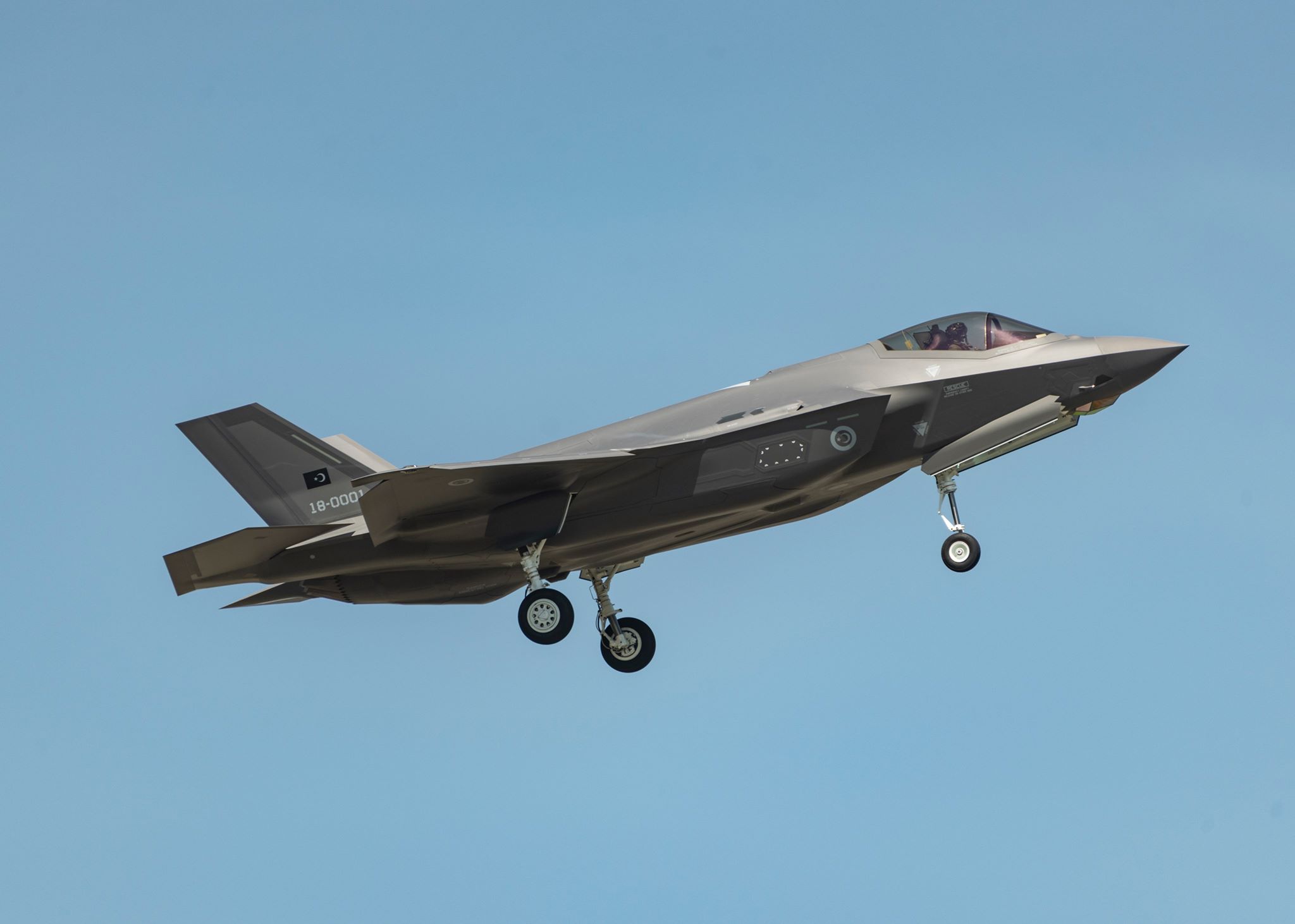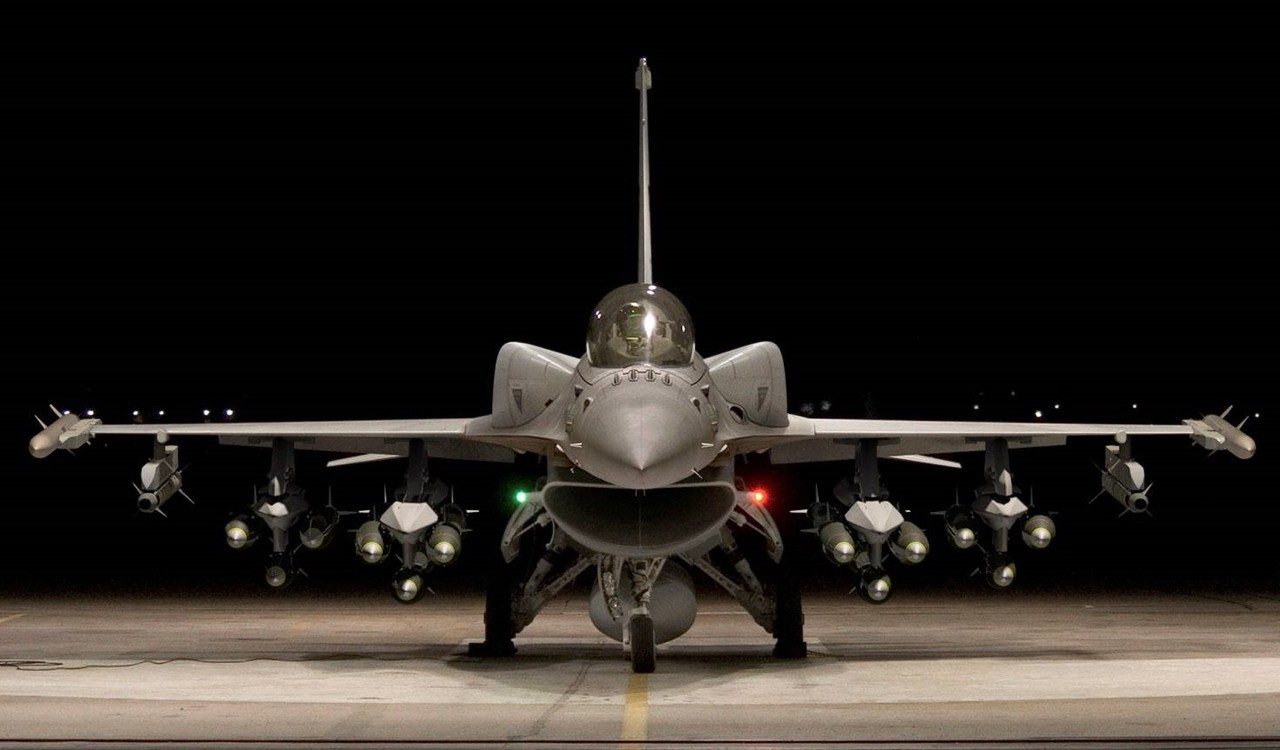The US Air Force (USAF) has indicated that the F-16 fighter jets are here to stay, putting to rest all speculations about a successor aircraft in the foreseeable future.
Several Air Force officials recently had the opportunity to speak on the future of the F-16s during a press conference held as part of the Air Force Life Cycle Management Center’s (AFLCMC) Life Cycle Industry Days event. The USAF isn’t in any hurry to replace the decades-old Viper family.
Senior USAF officials informed that the F-16 fighter jet fleet would continue to operate for the foreseeable future. The Air Force appears to be prioritizing the upgrade work that will keep F-16s in the air for years, if not decades, before deciding what will come next, Air Force Magazine reported.
“We anticipate hundreds of F-16s in active service for decades to come,” Col. Tim Bailey, Air Force Life Cycle Management Center’s F-16 program manager, said at a press conference at the Life Cycle Industry Days.
The US Air Force describes the F-16 Fighting Falcon as a compact, multirole fighter aircraft. It is highly maneuverable and has proven itself in air-to-air combat and air-to-surface attack. It provides a relatively low-cost, high-performance weapon system for the United States and allied nations. It has been in service for several decades.
The service intends to continue the significant modernization and upgrade projects that have kept the F-16’s reputation as a force multiplier in the combat air forces. The announcement aligns with the ‘4+1’ plan devised by the Air Force, earlier noted by EurAsian Times.
The USAF fleet will be cut down as part of a long-planned strategy called “the 4+1 fighter plan,” which will be implemented by 2030. The “4+1” plan calls for the F-22 as one leg, followed by the Next-Generation Air Dominance fighter; the F-35 as the “cornerstone” of the fleet as another; the F-15E/EX as a supplement to carry massive armaments as a third; and F-16s as force-capacity maintenance as a fourth.
The US Air Force intends to fly the F-16 fighter jets for a long time while retiring many others to ration resources for a more combat-capable and combat-ready fleet. The F-16s are undergoing massive upgrades, as part of which the aircraft received state-of-the-art AESA radars recently.

Even though there were speculations and reports that the Air Force would buy additional F-35 Lightning II fighters (1763 units) to replace the F-16, there has been no progress.
The Pentagon requested $11 billion for 61 Lockheed Martin F-35 Lightning II fighters for fiscal year (FY) 2023, 33 fewer than the 94 it had previously planned for in FY 2023, within an $18.499 billion aircraft procurement plan.
With the Air Force’s higher echelons now making their stance about the F-16s clear, any F-35s that will be bought would probably be in addition to the F-16s and not as a replacement.
In another development, the Air Force Chief General C.Q. Brown had been considering the prospect of acquiring a “fifth-gen-minus” fighter that is entirely new, more affordable, combines low cost with low performance, and uses the most recent digital design and production capabilities.
The above concept appears to be mirrored by the MR-F/MR-X multirole fighter project. However, the Air Force has chosen not to pursue it as an official program and is focused on more upgrades and enhancing the performance of F-16 fighters instead.
How The USAF Is Keeping The F-16s Relevant
The Service Life Extension Program (SLEP) and Post Block Integration Team are the main programs that have permitted the F-16 to keep flying and remain competitive as far as combat is concerned.
SLEP, first announced in 2017, aims to keep around 300 of the newest F-16s combat-ready, from Blocks 40/42 to Blocks 50/52. The changes to the F-16 under SLEP were carried out in collaboration with the AFLCMC. The F-16’s manufacturer Lockheed Martin has been significantly responsible for adding years to the jet’s operational service.
In 2018, the Air Force Materiel Command announced that the F-16 Service Life Extension Program will keep the jets flying until nearly 2050. The program incorporates a dozen structural modifications—from bulkheads to wings and canopies—into a single, repeatable package. It also increases flying hours from 8,000 to 12,000.
Air Force Magazine reports that SLEP is currently almost finished. According to Col. Tim Bailey, manager of the AFLCMC’s F-16 program, quoted by the publication, “these modest upgrades—each costing a few million—have given the F-16s as mentioned above a lifespan of up to 20 years.”
In addition to the SLEP, the US Air Force decided to undertake its most extensive upgrade program earlier this year. On February 28, the Air Force Life Cycle Management Center announced that up to 22 changes would be made on F-16 fighter jets. The initiative intends to make aircraft more lethal and ensure the fourth-generation fighter can deal with present and emerging threats, EurAsian Times reported.
Active Electronically Scanned Array radar, new cockpit displays, a mission computer, and a new database are some of the 22 improvements. The fighters will also get a Communication Suite Upgrade, a Center Display Unit, a Programmable Data Generator, and several other crucial hardware parts to update the aircraft and next-generation electronic warfare capabilities.

The complex project, known as Post Block Integration Team or PoBIT, is being led by the Air Force Life Cycle Management Center’s Fighters and Advanced Aircraft Directorate, which formulated the strategy to organize and install the upgrades on the aircraft.
72 Air National Guard Block 30 F-16C Viper fighter jets acquired powerful new AN/APG-83 active electronically scanned array radars in June 2022 as part of a considerable upgrading effort. Hundreds more Air Force F-16s and other Vipers worldwide are currently being ordered with the Scalable Agile Beam Radars or SABRs.
The majority of the Air Force’s updated F-16s will eventually sport the “Have Glass” finish, according to Air Force Magazine. The two-tone, gray-on-gray paint scheme of the Viper will be replaced by the radar-absorbing coating, which has been in use for years in various variants. It aids in lowering the radar cross-section of the jet, improving its survivability, even if only slightly.
At this point, the Air Force’s quest for the next multirole fighter, known as MR-F or MR-X, continues to be primarily forward-looking. As of now, the F-16 Vipers will keep taking to the sky.
- Contact the author at sakshi.tiwari9555@gmail.com
- Follow EurAsian Times on Google News




